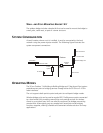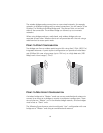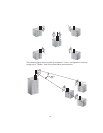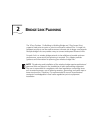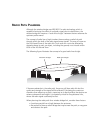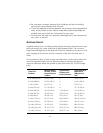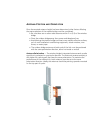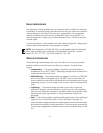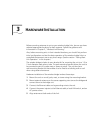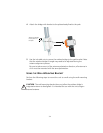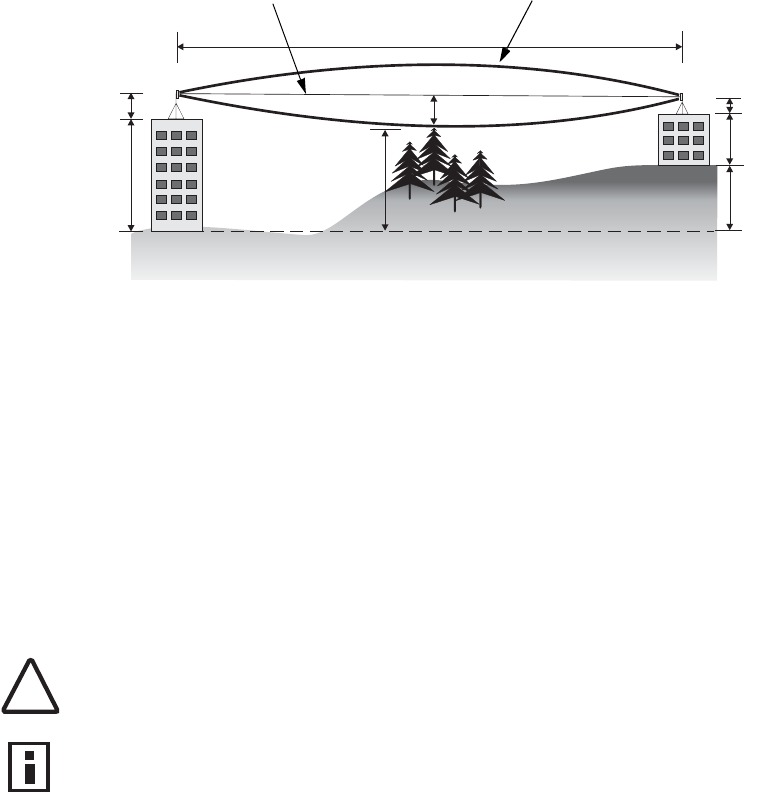
2-5
Note that to avoid any obstruction along the path, the height of the object must
be added to the minimum clearance required for a clear radio line-of-sight.
Consider the following simple example, illustrated in the figure below.
A wireless bridge link is deployed to connect building A to a building B, which is
located three miles (4.8 km) away. Mid-way between the two buildings is a small
tree-covered hill. From the above table it can be seen that for a three-mile link,
the object clearance required at the mid-point is 5.3 m (17.4 ft). The tree-tops on
the hill are at an elevation of 17 m (56 ft), so the antennas at each end of the link
need to be at least 22.3 m (73 ft) high. Building A is six stories high, or 20 m (66
ft), so a 2.3 m (7.5
ft) mast or pole must be constructed on its roof to achieve the
required antenna height. Building B is only three stories high, or 9 m (30 ft), but is
located at an elevation that is 12 m (39 ft) higher than building A. To mount an
antenna at the required height on building B, a mast or pole of only 1.3 m (4.3 ft)
is needed.
A
B
3 miles (4.8 km)
5.4 m
17 m
20 m
2.4 m
12 m
9m
1.4 m
Visual Line of Sight
Radio Line of Sight
WARNING: Never construct a radio mast, pole, or tower near overhead power
lines.
!
NOTE: Local regulations may limit or prevent construction of a high radio mast
or tower. If your wireless bridge link requires a high radio mast or tower, consult
a professional contractor for advice.



